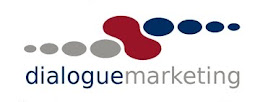Consider this article in the context of the previous blog entry, on the evolution of email marketing.
There are those pundits that have been proclaiming email to be on the decline, with social media set to be the new black (a term I borrowed from an advertising campaign).
There are those pundits that have been proclaiming email to be on the decline, with social media set to be the new black (a term I borrowed from an advertising campaign).
Yes, social media may be all the rage, but should we be wildly allocating resources, at the expense of email?
Well, that is a question we would all like a definitive answer to.
Fortunately a company called Social Twist, an embryonic business that has experienced a meteoric rise to fame in the social media sharing widget space (think AddThis), recently released the results of one of their surveys.
They decided to analyse the social media sharing behaviour, of the most recent 10 million referral messages. The results are enlightening.
Email and instant messaging constitute 84% of all content shared across the internet. Of the email providers, Yahoo constituted 44% followed by MSN at 25%, and then GMail at 19%. GMail came as a surprise to me.
Email and instant messaging constitute 84% of all content shared across the internet. Of the email providers, Yahoo constituted 44% followed by MSN at 25%, and then GMail at 19%. GMail came as a surprise to me.
Email constitutes 59% of all content shared across the internet
As for the much hyped social networking channels? In totality, these only constituted 14% of all content shared across the internet, with Facebook being the proverbial giant at 11%, which is more or less on a par with Yahoo Messenger, the instant messaging service. So Facebook has become a serious contender.
But what about Twitter? Gasp.
Twitter constitutes a mere 0.70% of all content shared across the internet.
Another one that is so small, as to be almost insignificant, is LinkedIN, at 0.14% of all content shared. The report, known as Social Media Sharing Trends 2009, provides a lot more detail, and is well worth a read. You can access it online, or download a pdf version which I created for convenience.
The take away, for me, is that it is always important to monitor the trends, before you go and throw the baby out with the bath water. Email remains the tool of choice. Twitter may well be an up and coming medium, but for now, it is probably best utilised to create hype and as a traffic generator, given how rapidly tweets are indexed by the major search engines.
Whilst on the point of indexing, bear in mind that email and instant messaging fall outside the net, so to speak. They may constitute the largest media, as regards sharing across the internet is concerned, but this sharing is driven by the end user. There is not much of an active role for marketers to play. But if you look at the active mediums, which constitues the social networking mediums, then Facebook is by far the largest.
So email remains as relevant today as it ever was.
Download a printable copy of the blog article.
Whilst on the point of indexing, bear in mind that email and instant messaging fall outside the net, so to speak. They may constitute the largest media, as regards sharing across the internet is concerned, but this sharing is driven by the end user. There is not much of an active role for marketers to play. But if you look at the active mediums, which constitues the social networking mediums, then Facebook is by far the largest.
So email remains as relevant today as it ever was.
Download a printable copy of the blog article.






